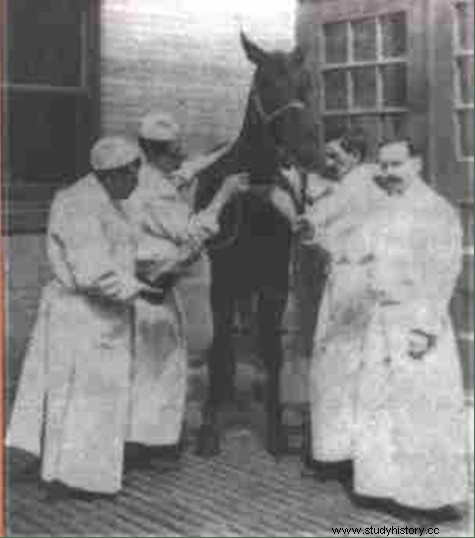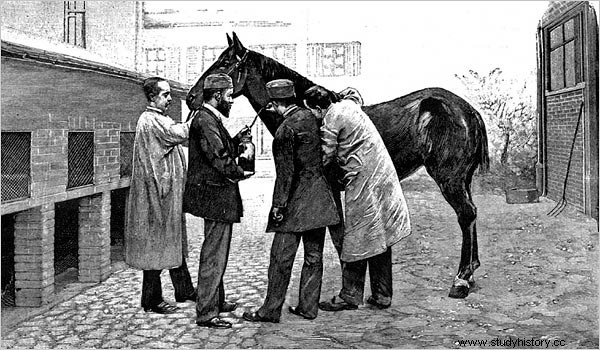diphtheria is an acute infectious disease caused by the bacterium called Corynebacterium diphtheriae and it is transmitted, mainly, by the respiratory route (microscopic droplets that are emitted when speaking, coughing or sneezing). During the 19th century and the first decades of the 20th, several diphtheria epidemics broke out, mainly affecting young children and causing high mortality.
In 1890 the German physician Emil von Behring , Nobel Prize in 1901, discovered diphtheria antitoxin that it did not kill the diphtheria bacteria, but neutralized the toxins it released. During the summer of 1894, Hermann Biggs , the head of the New York Department of Health, made a scientific tour of Europe, where he was able to see first-hand the work of his colleague. Behring used horses to obtain the antitoxin with excellent results, especially if given within 24 hours of infection. Biggs could not wait and communicated, via telegraph, the news to his American colleagues so that they could get some horses and prepare the facilities to begin work. Unfortunately, the budget of his Department did not have enough budget and they would have to wait until the following year. Biggs couldn't wait and out of his pocket bought a horse named Jim who was dedicated to pulling a cart delivering milk. In October Jim was injected with the diphtheria toxin; Weeks later, blood was drawn and after the appropriate treatments... the month of December they already had the antitoxin serum . The first doses were administered on January 1, 1895, reducing infant mortality by more than 50% in less than five years. Due to the success of the serum, the New York Department of Health built a facility in Otisville with a horse farm and a sanatorium for such treatment.

Jim
But Jim's ending was not going to be a story with a happy ending. On October 2, 1901, he had to be put down because he had contracted tetanus. The problem is that the serum obtained from his blood draws for the month of September were also infected. Several children who had overcome diphtheria with Jim's serum have died of tetanus. Following this episode, in 1902, the Biological Products Control Act was passed, establishing a Biological Research and Evaluation Center to oversee the safety of vaccines. Despite this bitter end, it is estimated that Jim produced more than 30 liters of whey .

Sources:The New York Times, Equiculture
